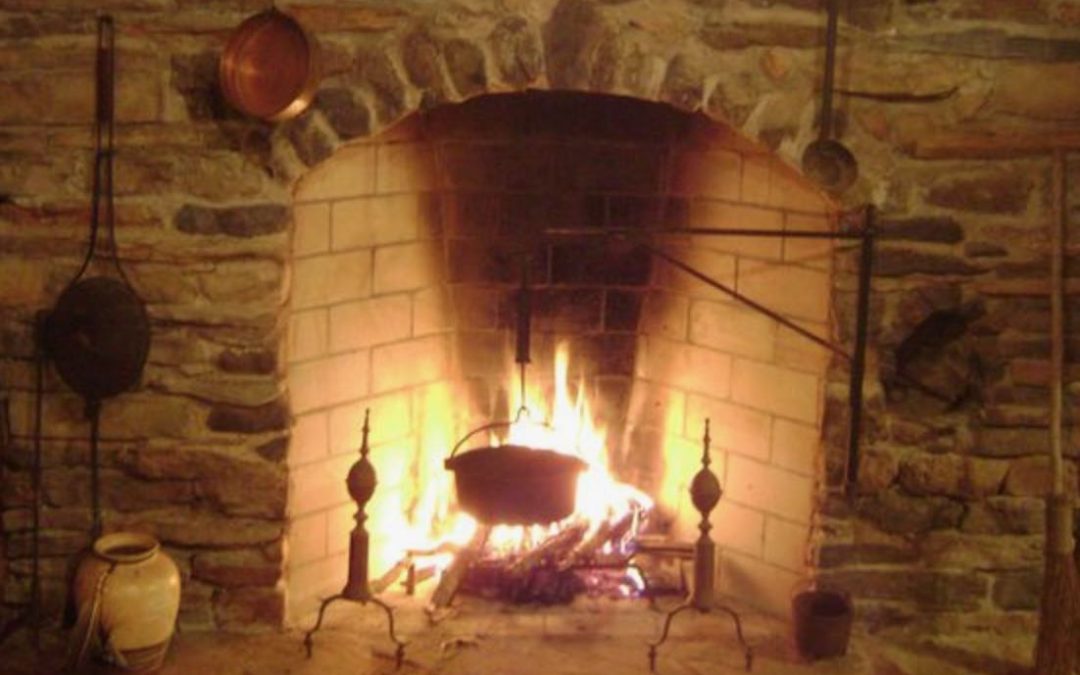
by sunshine | Nov 20, 2023 | NJ Chimney Inspection
NO! You cannot smoke your turkey in the Chimney even with the flu open. Thanksgiving is by far the worst day for house fires in the U.S. There were 1,600 reported home cooking fires, a 238% increase over the daily average, on Thanksgiving 2017, according to the U.S. Home Cooking Fires report released by the National Fire Protection Association. That’s more than three times the number of home cooking fires on a typical day.
Can I smoke the turkey in the chimney?
The leading cause of these fires is unattended cooking, according to the report. With people preparing multiple dishes, often with lots of guests and other distractions in and around the kitchen, it’s easy to see why the number of home cooking fires increases so dramatically. Fortunately, the vast majority of cooking fires are highly preventable with a little added awareness, and by taking simple steps to minimize those risks.
The following is a list of tips for cooking safely on Thanksgiving based on the advice of the association and the American Red Cross.
- Never leave the kitchen unattended while you’re cooking on the stovetop. Turn off the stove if you need to step out of the kitchen.
- Keep flammable items, such as towels, oven mitts and wooden utensils, at least three feet away from cooking areas.
- Make good use of cooking timers to keep track of when a dish should be done and to remind yourself the stove or oven is on.
- Avoid wearing loose or hanging clothes or accessories that could easily come in contact with a heat source.
- Keep children and pets at least three feet away from the stove and from hot foods and liquids.
- Turn pot handles toward the back of the stove so they don’t accidentally get bumped when someone walks by them.
- Stay in the house when you’re cooking turkey and check on it regularly.
- Fires can start when the temperature gets too hot. If you’re frying food and start to see smoke or if the grease starts to boil, turn the burner off and carefully remove the pan from the heat source.
- Keep a pan lid or cookie sheet close in case of a fire starting in your pan. Use the lid or cookie sheet to cover the pan and put out the fire, and make sure to leave it in place until the pan has completely cooled.
- For an oven fire, turn off the heat and keep the door closed until you’re confident the fire is completely out. Stand to the side when you open the door just in case and call the fire department if you have doubts or concerns.
- Check the kitchen before going to bed or leaving the house to make sure all appliances, burners and ovens are off.
Oven Roasted Turkey
When preparing your kitchen for a delectable thanksgiving, Turkey prep is at the top of list. Before actually cooking your turkey or any other food, ensure it is COMPLETELY THAWED to prevent a fire or explosion hazard. Below are a few more useful tips to also to prevent fires:
- After testing your food, immediately close the oven door
- Keep your oven mitts and other cloth and paper out of the way of the burners.
- Keep a fire extinguisher, baking soda and metal lids nearby to put out fires quickly.
- NEVER use water on grease fire
Campfire Roasted Turkey
Campfire Roasted Turkey must always be cooked outside. Food cooked in a fireplace tastes marvelous, better than food cooked in most conventional ways today—the charcoal [grill] included,” says Suzanne Goldenson in the preface to her revised edition of The Open-Hearth Cookbook: Recapturing the Flavor of Early America. “And with a few minor exceptions—large cakes, soufflés and other delicate confections—most anything one could desire to eat can be easily prepared in a fireplace.”
Tools
- A multi-pronged fork that can be used to roast hot dogs or marshmallows.
- Wide fireplace shovels that can be used for making raclette or roasting chestnuts.
- A wire holder at the end of a long handle for making grilled cheese sandwiches.
- A cooking “crane”—a swiveling metal bar that can be mounted on a fireplace wall to swing out over the fire holding a cast iron pot to cook everything from soups to stews.
- Sturdy trivets that can be placed at the edge of the fireplace as a base for skillets or pots to cook meats and vegetables beside the flames.
Ingredients
- 8-12 pound Turkey
- salt and pepper
- seasonings
Preparation
Serves 8 to 10 people. Season the turkey with salt and pepper and a seasoning blend (if desired). Place a meat rack in the bottom of a 14″ deep Dutch oven, spray with oil. If stuffing turkey, pack loosely. Place turkey on the rack. The sides of the turkey should not be touching the Dutch oven. Cover and start on low hook over medium fire. When the turkey begins to cook (steam and sizzle), raise to higher #2 hook and continue cooking. When the meat thermometer reaches nearly done stage, remove from fire, add top coals to brown and finish cooking. Roasting time for 8 to 12 lb. turkey is 2-3/4 to 3 hours, if stuffed 3 to 3-1/2 hours. Turkey is done when internal temperature reaches 180°F, stuffing 165°F.
Campfire Roasted Turkey
Of course, there are dangers to cooking inside that you won’t face on an outdoor grill. The main one is setting the house on fire. Cooking flames should be small anyway, and easily flammable articles, including loose clothing, should be kept well away. You’ll also need caution to avoid burns both from the fire and from superheated cookware. From cooking your bird to creating a cozy atmosphere, there are a ton of fire hazards for the holiday season. Make sure your chimney is clean and ready for a cozy fire.
Contact us
St John Chimney Sweeps Address 1613 Reed Rd D1, Pennington, NJ 08534 Proudly Serving Mercer County, Somerset County, Hunterdon County, & Surrounding Areas
Website http://www.stjohnchimneysweeps.com/
Email: stjohnchimneysweeps@verizon.net Phone Number: (609) 737-0133
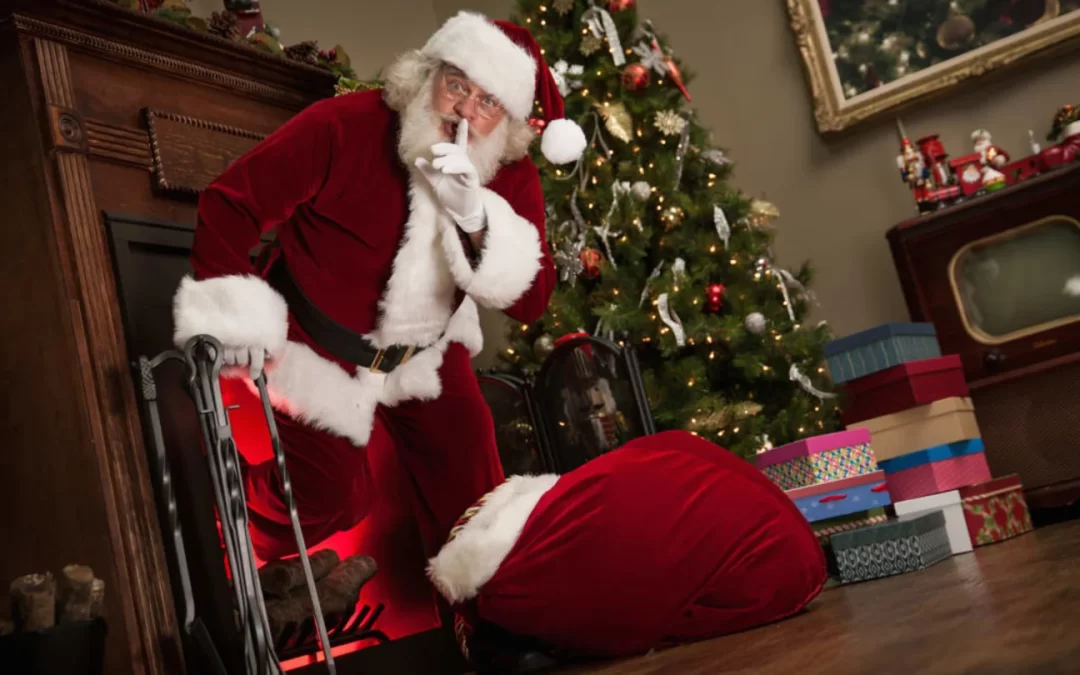
by sunshine | Nov 15, 2023 | Mercer County Chimney Sweep
Is your chimney ready for the arrival of Santa Claus? A clean and clear chimney may be as important to Santa Claus as homemade sugar cookies and milk. With the following three steps, you will ensure a Santa-Claus-friendly chimney and also help to protect your home and family from potential danger.
Chimney Cleaning
Chimney sweeping is an important way to create the right environment for Santa, especially if you have a wood-burning fireplace. Flammable creosote is deposited in the chimney lining every time there’s a wood fire. The tar-like substance builds up over time. When chimney cleaning is neglected, creosote can even create a chimney obstruction. This results in a smoky fireplace that exposes the family to toxic fumes.
Annual chimney cleaning is recommended by the National Fire Protection Association (NFPA). Other leading fire safety experts recommend chimney sweeping once the creosote has built up to 1/8”. If you use your fireplace frequently, you may need to schedule chimney cleaning in the middle of winter.
When experts clean your chimney, you don’t need to worry that the sooty gunk will make a mess in your home. A special vacuum and proven procedures are used to ensure that while your chimney flue is being cleaned, your home stays the way chimney professionals found it when they arrived. You just need to move delicate items and things like Christmas stockings from the immediate area before the experts arrive.
Chimney Inspection
The fire safety experts agree that chimney inspections should be scheduled annually. Without an inspection, there may be debris in your chimney. Of course, your chimney isn’t Santa-Claus-friendly if the jolly old elf gets tangled up with tree limbs or encounters a frightened or dead animal in the chimney. Thousands of chimney-related fires occur every year, and a significant percentage of them happen because of chimney blockage that results in out-of-control chimney fires.
A chimney inspection is also the best way to discover whether the flue lining is intact. If there is any damage whatsoever, the liner must be repaired or replaced. Otherwise, the home is vulnerable to exposure to deadly toxic fumes and a dangerous, quick-burning house fire.
Burn Seasoned Wood
Seasoned firewood is the only kind of fuel that’s safe to use for fires in a wood fireplace or wood stove. “Seasoned” means that the wood has a low moisture content of 20% or below.
It takes firewood anywhere from six months to a year or more to dry out sufficiently. If you’re in doubt about the amount of moisture in your firewood, you can invest around $20 to get a moisture meter.
Seasoned wood burned in a properly functioning fireplace or wood stove burns cleaner than green wood, which leaves excess creosote in chimney liners. If you burn green or unseasoned wood, the liner will be more clogged with creosote and Santa Claus may just leave you a lump of coal in your stocking.
Contact us
St John Chimney Sweeps Address 1613 Reed Rd D1, Pennington, NJ 08534 Proudly Serving Mercer County, Somerset County, Hunterdon County, & Surrounding Areas
Website http://www.stjohnchimneysweeps.com/
Email: stjohnchimneysweeps@verizon.net Phone Number: (609) 737-0133
Tips for Preventing Chimney Fires
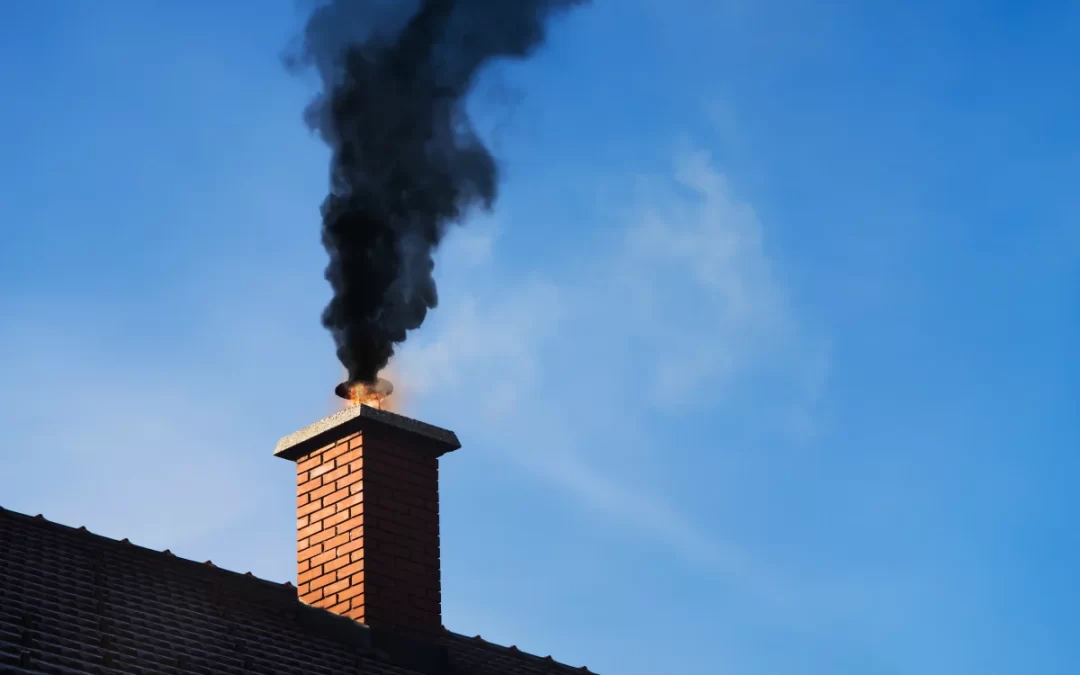
by sunshine | Oct 19, 2023 | Mercer County Chimney Sweep
Around New Jersey, we encounter many older homes where furnaces vent combustion gases into chimneys. In theory, this is ok. The furnace exhaust is hotter than the surrounding air. Once inside the chimney, noxious fumes, including carbon monoxide (CO), rise to the top and dissipate into the great outdoors. No problem, right? Well… yes. It can be a problem.
Two Different Chimneys
Imagine two different homes, each of which has a furnace that vents into a chimney.
The first home contains a mostly internal chimney. Nearly all of the chimneys are contained within the home and, therefore, inside the building envelope. The only exception is the part at the very top, just above the roofline. This chimney also contains an interior metal liner that ties in seamlessly with the furnace’s exhaust pipe.
Now consider another home where the chimney contains clay and mortar liner. It’s an external chimney, so three sides of the chimney reside outside the home. Compared to the chimney in the first home, this one has more exposure to outdoor temperature fluctuations because it’s not located inside an insulated space.
Backdraft
During the winter, the chimney in the first home stays as warm as the home’s living room. When hot combustion gases enter the chimney, they don’t lose much heat – they’re still hotter than the surrounding air. That being the case, they easily vent out of the chimney and away from the home. The metal liner also ensures a seamless connection between the exhaust pipe and the chimney itself.
Not so with the other chimney! Since it’s largely exposed to the elements, the chimney stays cold all winter long. When the furnace exhausts into the chimney, the gases quickly cool off before exiting to the outdoors. They can’t all rise to the top of the chimney, so some of them backdraft through the vent pipe itself and enter the home’s crawlspace. Not good
Hazards
In our “tale” above, it’s clear that the first chimney is the better option from a safety standpoint. However, in the real world, things aren’t always so cut and dry.
Some people have exterior chimneys that have been retrofitted with metal liners. Others have interior chimneys with masonry liners. And so on. All kinds of scenarios are possible.
If your furnace vents into a chimney, a combustion safety test is the only way to be sure that combustion gases aren’t backdrafting into your home. And while you should have a carbon monoxide detector in your home, waiting for it to go off is not a good strategy – especially since it might not respond to chimney leaks.
It’s better to preempt danger, not wait for it to arrive. Here’s when you need to hire a pro to perform a combustion safety test for your furnace-to-chimney situation:
- You’ve never had it tested before. If your furnace vents into a chimney and you’ve never done a combustion safety test, it’s a good idea to get one. That’s especially true for external chimneys since they stay colder during the winter and are more prone to exhaust-related problems than internal chimneys. Older clay-and-mortar liners are also subject to damage and deterioration that can lead to inadequate venting of furnace exhaust.
- You see white corrosion on your furnace vent pipes. More often than not, this means you’ve got a back drafting problem. When the combustion gases stay inside the vent pipe or are forced back into it before escaping the chimney, you’ll see corrosion on the metal – usually at the elbows.
Don’t panic if either of these situations applies to you! Assuming you’re sitting here, reading this, and still breathing ok, you’re probably going to be just fine. However, it’s a good idea to schedule a combustion safety analysis pronto so you can find out for sure if there’s anything dangerous going on.
Solution
Let’s say you’ve got a furnace-to-chimney backdrafting problem. What now? One solution is to install a strong, metal chimney liner that’s unlikely to crack or corrode. You can tie it into your furnace exhaust pipe and reduce the potential for CO to backdraft into your home.
Another fix is to upgrade to a closed-combustion furnace (90% AFUE or higher). This fix often makes sense if you’ve got a really old furnace or a big external chimney that stays cold throughout the winter. These high-efficiency units use PVC pipes to pull air in for combustion and vent the by-products outdoors. Your furnace won’t exhaust gases into your chimney anymore. Instead, an HVAC contractor will install the system to expel the exhaust directly outside your home.
Gas Water Heaters
In some homes, gas water heaters also vent into chimneys. These should be tested as well – especially if you see melted (or melting) plastic grommets on the side of the water heater. That’s a sign that hot gases are back-drafting toward the unit.
A backdrafting water heater is arguably an even bigger problem than a backdrafting furnace. After all, furnace exhaust leaks are only a risk when the furnace is operating. Water heaters operate all year round, so you’re at risk even during the summer!
If you find out that you have a problem with a backdrafting water heater, you’ve got two options:
- Install a chimney liner. If applicable, installing a chimney liner inside your existing chimney might fix the problem.
- Get a new water heater. Tankless gas water heaters have dedicated exhaust pipes that won’t vent into your chimney. New electric water heaters are also much more efficient than the ones that were available several years ago. The most efficient water heaters on the market, heat pump water heaters, are powered by electricity and require no combustion to heat your water!
Carbon Monoxide Poisoning
You probably don’t have a problem with carbon monoxide, but it’s a good idea to be certain.
Chimney liner problems, along with cracked heat exchangers, are among the most common sources of CO leaks. The only way to be sure you don’t have a problem is to have a pro perform combustion analysis.
When properly designed, a chimney-vented furnace is ok. Regardless, you should verify whether the design is sound and that it hasn’t been compromised in any way throughout the years. A true combustion safety inspection with a combustion analyzer is best.
Clean Chimney
Many homeowners wrongly think cleaning their chimneys will save them money, but doing so can be extremely dangerous for untrained people. Therefore, a professional chimney sweep will keep you and your family safe by lessening the possibility of a chimney fire.
Contact us
St John Chimney Sweeps Address 1613 Reed Rd D1, Pennington, NJ 08534 Proudly Serving Mercer County, Somerset County, Hunterdon County, & Surrounding Areas
Website http://www.stjohnchimneysweeps.com/
Email: stjohnchimneysweeps@verizon.net Phone Number: (609) 737-0133
Blog
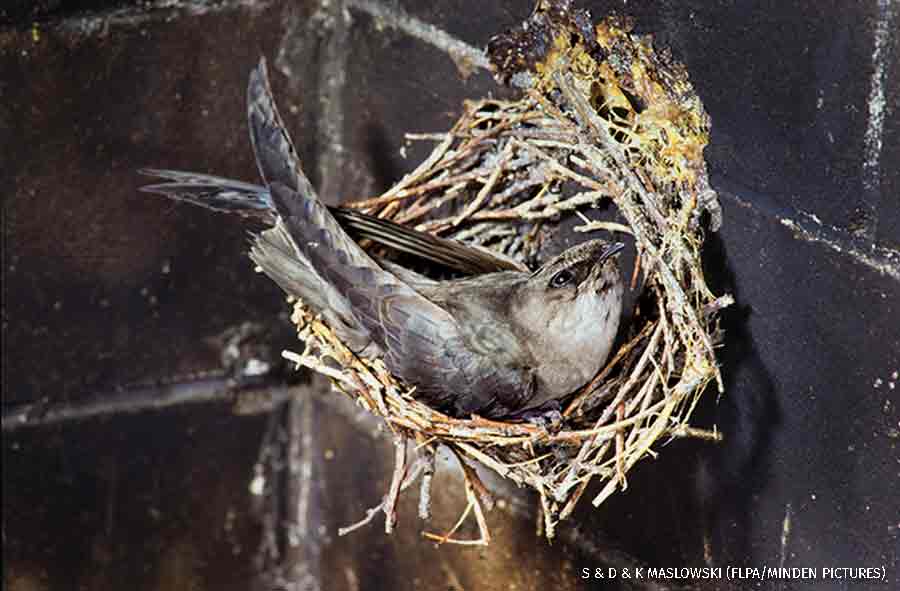
by sunshine | Apr 12, 2023 | Mercer County Chimney Sweep
Today, many houses are built with chimneys that use smaller metal flue pipes rather than clay liners. These metal flues can sometimes be death traps for animals, who cannot grip the slippery metal and may even fall into the fireplace. Before European settlement brought chimneys to North America, Chimney Swifts nested in caves, cliff faces, and hollow trees.
Swifts
The “flying cigar” silhouette of the Chimney Swift is a common sight all summer in the skies over eastern cities and towns. Lakes and rivers are especially good places to look for swifts, where they often forage along with swallows, which have broader wings and more fluid wingbeats. Be sure to keep an ear out for their distinctive, high-pitched chattering calls—they often call on the wing while foraging. During migration, thousands of swifts roost together in chimneys, funneling into them at dusk in spectacular tornado-like flocks. Large numbers of Chimney Swifts roost together in a single chimney during the nonbreeding season. There’s warmth in numbers: during cold nights, the temperature inside a chimney roost can be 70°F warmer than outside.
Swifts’ Nest in the Chimney
Nests
Swifts’ nests are small cup-shaped structures constructed of small twigs and glued to the chimney wall with saliva. They are not a fire hazard, being far too small for that, but should always be removed after the birds have left in the fall. This does the swifts a favor, both by removing bird parasites and the nest structure itself, which might be used by returning swifts, but could be unstable enough to collapse during the nesting period. Swifts do tend to return to the same nesting site year after year, if available.
Solutions
The rules regarding swifts in chimneys are simple. First, delay the annual cleaning until after the young have left the nest. Although you may hear the noises of young birds as they beg for food, these are only temporary and should be tolerated. Ask your chimney sweep to come back in the fall if swifts are in occupancy earlier in the season. Professional sweeps should know that swifts are protected under the Migratory Bird Treaty Act, and anyone who knowingly destroys birds or nests that might contain eggs or young can be fined or penalized. Finally, chimneys lined with metal should always be capped, as birds that enter these can easily become trapped.
Swifts’ Nest in the Chimney
Contact us
St John Chimney Sweeps Address 1613 Reed Rd D1, Pennington, NJ 08534 Proudly Serving Mercer County, Somerset County, Hunterdon County, & Surrounding Areas
Website http://www.stjohnchimneysweeps.com/
Email: stjohnchimneysweeps@verizon.net Phone Number: (609) 737-0133
Spring Clean your Chimney
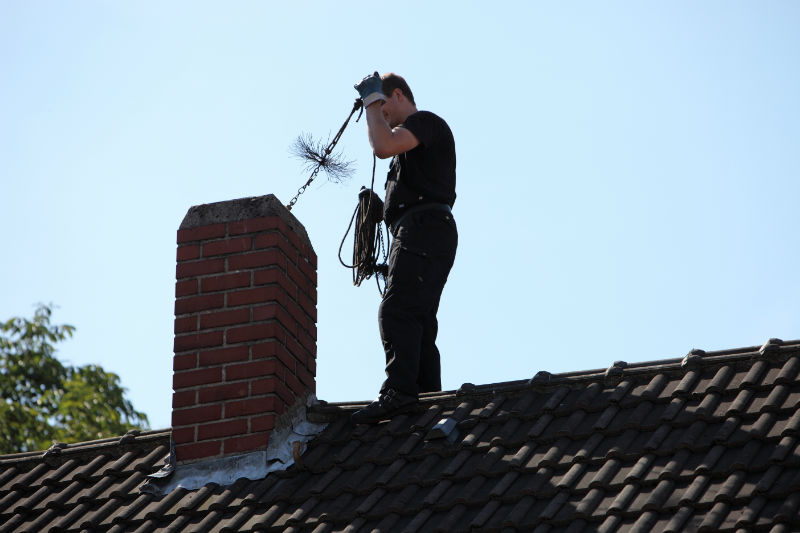
by sunshine | Mar 4, 2023 | Mercer County Chimney Sweep, NJ Chimney Sweep
There’s no better time to get your chimney cleaned and inspected by a professional chimney sweep than right now. Spring is here, which means more rain, more pests, and probably some much needed deep cleaning. Spring clean your chimney to remove the winter soot and be prepared for the summer’s heat.
Spring Clean your Chimney
Spring is typically the best time to check your masonry and fix any holes or replace any bricks that are loose. Heavy rains can eat away at the bricks and mortar, creating holes for water leaks and making your chimney system weak. There could also be damage to your chimney or flue liner as a result of moisture seeping into the exterior masonry, causing the bricks, stones, or flue tiles to crack. Flashing disruption can lead to serious roof damage and eventual water leaks into the attic and ceilings of your home. Cracks can cause venting problems and become a safety hazard. An annual inspection can detect any dangerous cracks or leaks and they can be addressed or repaired immediately.
Moisture
Moisture damages should be repaired quickly, in order to keep the costs of repairs low and slow down any deterioration. In addition, by scheduling your chimney cleaning and inspection during the spring season, you beat the rush, which is typical in fall and winter, with temperatures cooling down.
Odor
Your masonry takes a beating from all the moisture as the seasons change, leaving you with potential issues. Anytime you use your fireplace, some amount of creosote is deposited in your chimney flue. Creosote is highly flammable and becomes more difficult and expensive to clean, the longer it builds up inside the lining of the chimney. Because it is highly combustible, if it builds up in sufficient quantities and the internal flue temperature is high enough, it may start a chimney fire.
This means that when it gets hot outside, particularly if moisture has made its way into your chimney, the deposits in the liner can emit a sour odor. The sour odor intensifies as summer heats up. Having chimney sweeps come to clean and inspect your chimney will ensure your house will smell fresh and clean.
Spring Clean your Chimney
Routine maintenance services should include a complete chimney inspection as well as the removal of any hazardous or combustible creosote and eliminating any accumulation of soot, dirt and debris. Keep in mind that the National Fire Protection Association recommends that that you have your chimney cleaned and inspected at least once a year or even more frequently if you have a fireplace or wood burning appliance that you use frequently.
Contact us
St John Chimney Sweeps Address 1613 Reed Rd D1, Pennington, NJ 08534 Proudly Serving Mercer County, Somerset County, Hunterdon County, & Surrounding Areas Website http://www.stjohnchimneysweeps.com/ Email: stjohnchimneysweeps@verizon.net Phone Number: (609) 737-0133
Chimney Sweeps in Mercer County NJ





